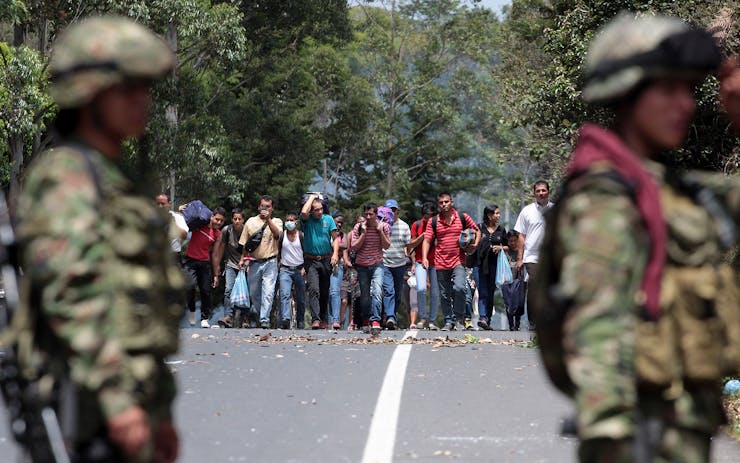Global cannabis prices fluctuate much like those of any other commodity, based heavily on supply and demand. And just like in other sectors, conditions on the ground can cause regional shortages or instability. Colombia is a prime example: While U.S. states and some European countries have seen prices tumble in recent years due to increased (and legal) production, prices in Colombia have gone up—even though production has increased in that country, too. So what accounts for the spike in price?
Similar to the legal situation in the Netherlands, recreational use of cannabis is decriminalized and generally tolerated in Colombia, and growing up to 20 plants at home is allowed. Commercial cultivation, however, remains illegal. Illegal distribution is nevertheless a major facet of life, giving many families of farmers a way to survive in an impoverished rural society.
But things are changing. Recent peace negotiations with FARC, the Marxist guerrilla group that traditionally controlled some of the production zones, have left some areas vulnerable to turf wars among paramilitary groups. That has upset established trade patterns surrounding illegal production and distribution, leading to higher overall cannabis prices.
To make matters worse, this summer Colombia witnessed the longest and most costly strike in the nation’s history. The national truckers strike began in early June and ended after six weeks of violence and serious disruption to the Colombian economy It also hit cannabis lovers in the country’s two main cities of Bogotá and Medellín with a terrible drought. Drivers blocked main transportation routes, inflicting billion-dollar losses and causing severe shortages of food and other goods, including cannabis. Thirty-one police officers were injured during the strike and ensuing clashes between police and strike supporters. One protester was killed by a police tear-gas grenade.
The country’s truckers have held similar strikes periodically over the past decade, demanding fair wages and labor concessions from the government. But while the negotiations have seemed endless, the two sides arrived at only a partial agreement. “The two sides reached agreement on cargo prices and the gradual removal of old vehicles, ending the longest and most costly strike in Colombian history,” Reuters reported, “but failed to agree on toll road and fuel costs.”
Cannabis is transported to the major Colombian cities by road from cultivation zones, which are generally located deep in the Andes mountain range. Hundreds of hectares are grown there by illegal farmers. The strike disrupted the chain of transport to cities, leading to shortages. The street price of cannabis doubled or even tripled in some areas.
In Bogotá, only the wealthiest and best connected had the contacts to find what is called “creepy” — a term for indoor- or greenhouse-grown flowers cultivated by a handful of hobbyist growers in the cities. It’s an option that’s way too expensive for the average consumer, and many dislike the high levels of THC in these strains, generally imported hybrids. Most prefer what’s known as “regular,” domestic cannabis strains. Not only are these outdoor-grown, sativa landrace strains cheaper, they’re also familiar fare for Colombian consumers. Containing much less of the psychoactive compound THC, they tend to deliver a mellow and more mild effect. “Regular” can be up to one-tenth the price of “creepy,” as it usually contains seeds, has been overcured, and is much more widely grown. It’s akin to low-quality Mexican cannabis exported by cartels to the U.S. or the average Thai cannabis strains from Asia.
For the increasing number of tourists visiting Colombia, the recent price spike makes little difference. Tourists almost always pay higher prices than do locals, who know where to go or whom to call for delivery. Compared to North American and European prices, cannabis is still very cheap in Colombia, sometimes by a factor of 10 to 20. A well connected local can buy a kilo of “regular” for USD $30 to $100. Depending on the quality, a kilo of “creepy” will cost between $200 and $400.
Some politicians in Colombia have interpreted the strike’s effect on the drug market as a positive one. They’ve recommended police study it to design a counter-narcotics plan to stem the flow of drugs into the municipalities. But ironically, much of the conflict’s violence is the result of the black market’s illegal nature and the corruption that it brings.






